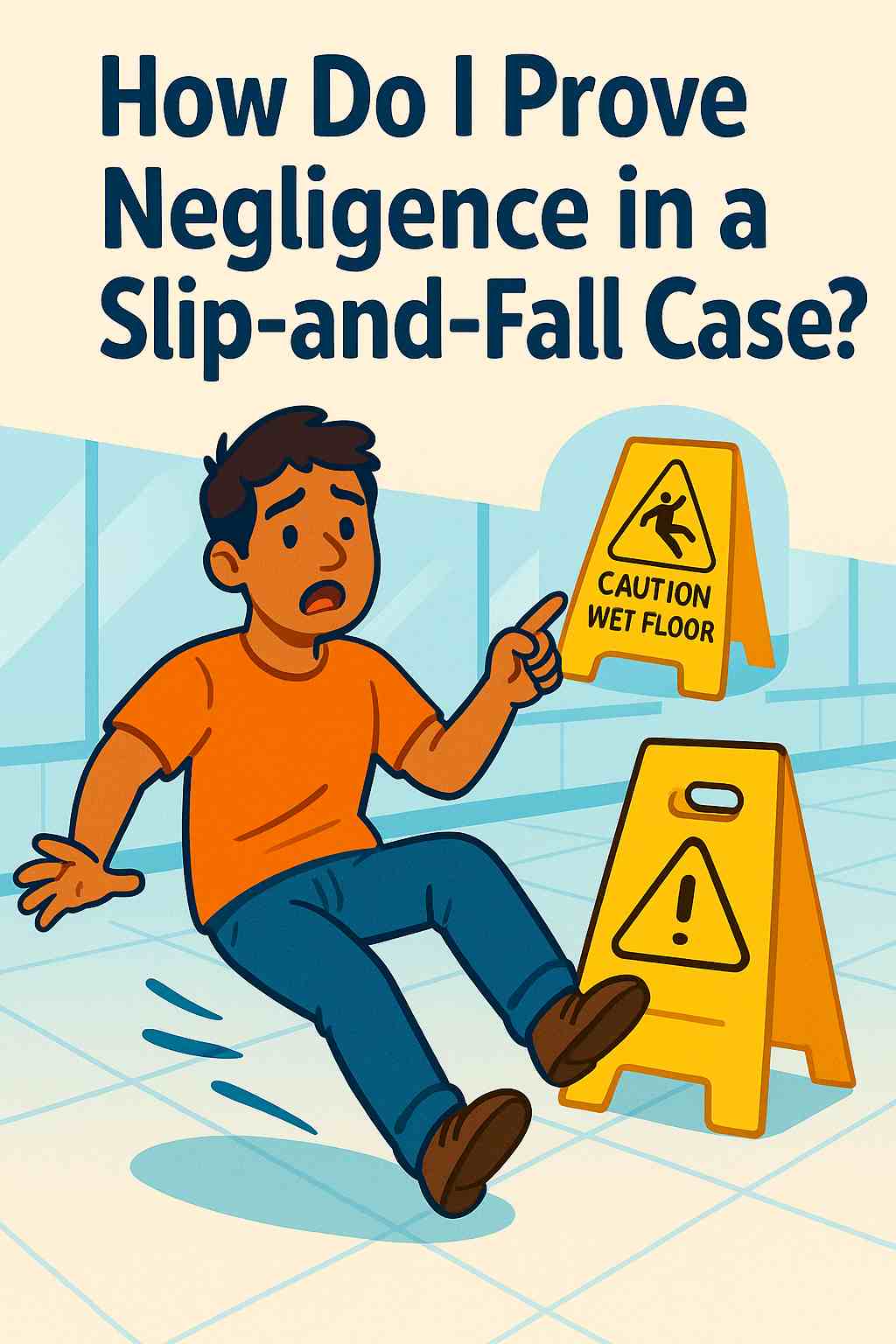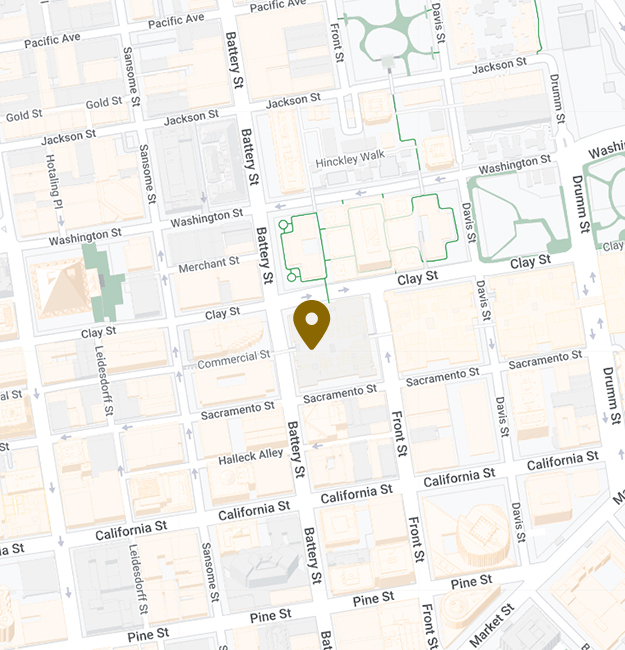How Do I Prove Negligence in a Slip-and-Fall Case?

How Do I Prove Negligence in a Slip-and-Fall Case?
Slip-and-fall accidents can happen anywhere—grocery stores, restaurants, sidewalks, office buildings, or private homes. A sudden fall can leave you with serious injuries like broken bones, head trauma, back injuries, or lasting pain that affects your work and daily life.
If you were hurt because of someone else’s negligence, you might be able to recover compensation for medical bills, lost wages, and pain and suffering. But to win your case, you have to prove negligence. That means showing the property owner or person responsible failed to keep the area safe.
Here’s what you need to know about proving negligence in a slip-and-fall case.
What Is Negligence in a Slip-and-Fall Case?
Negligence means someone didn’t take reasonable care to prevent harm. In a slip-and-fall case, it means the property owner or manager didn’t keep the area reasonably safe or failed to fix a dangerous condition they should have known about.
For example, if there’s a spill in a grocery aisle that’s left for hours without being cleaned up or marked with a warning sign, that can be negligence.
But if someone spilled their drink seconds before you fell and employees didn’t have time to see or clean it yet, it may not be negligence.
The Four Elements You Need to Prove
To win a slip-and-fall case, you must prove four key elements:
- Duty of Care
The property owner had a duty to keep the premises reasonably safe for visitors. This duty exists in most places open to the public and even for invited guests at private homes. - Breach of Duty
The owner breached that duty by failing to fix or warn about a dangerous condition. Examples include ignoring a wet floor, uneven pavement, poor lighting, or cluttered walkways. - Causation
The dangerous condition directly caused your fall and injuries. You need to show a clear link between the hazard and your accident. - Damages
You suffered actual harm, such as medical bills, lost income, or pain and suffering because of the fall.
You need all four elements to win. If you’re missing even one, the property owner may not be held liable.
Common Examples of Negligence in Slip-and-Fall Cases
Negligence can look different depending on the location. Here are common situations:
- Spilled liquids in stores not cleaned promptly
- No “wet floor” signs after mopping
- Damaged flooring or loose carpets
- Broken or missing handrails on stairs
- Poor lighting in hallways or parking lots
- Uneven sidewalks or potholes
- Ice or snow left uncleared on walkways
- Clutter blocking aisles or exits
In each case, the owner or manager knew or should have known about the hazard and failed to address it.
Actual vs. Constructive Notice
One of the biggest parts of proving negligence is showing the property owner knew or should have known about the hazard.
- Actual Notice means they really knew—like a manager being told about a spill.
- Constructive Notice means they should have known because the condition was there long enough that a reasonable owner would have found and fixed it.
For example, a puddle in a store aisle for several hours gives constructive notice.
How to Gather Evidence to Prove Negligence
Proving negligence relies on strong evidence. Here’s how to help your case:
- Take Photos of the hazard right after your fall if possible. Document wet floors, debris, broken steps, or poor lighting.
- Get Witness Info from anyone who saw the fall or the hazard. Their testimony can confirm what happened.
- Report the Incident to the property owner or manager right away. Ask for a copy of the incident report.
- Request Surveillance Video if the area had cameras. Footage can show the condition and how long it was there.
- Seek Medical Care immediately and keep all records. Your treatment proves you were injured.
- Save Clothing and Shoes worn at the time of the fall—they may be evidence of the conditions.
An experienced lawyer can help collect and preserve this evidence before it’s lost or destroyed.
Comparative Negligence
In many states, the defense may argue comparative negligence—that you were partly at fault for your fall. For example:
- Were you distracted (texting while walking)?
- Did you ignore warning signs?
- Were you wearing unsafe shoes?
If a court finds you partially responsible, your compensation might be reduced by your percentage of fault. For instance, if you’re found 20% at fault, your award is reduced by 20%.
Why Hiring a Lawyer Helps
Slip and fall cases can be tricky. Property owners and their insurance companies often fight hard to avoid paying. They may claim:
- They didn’t know about the hazard.
- You should have seen and avoided it.
- The condition wasn’t actually dangerous.
A personal injury lawyer understands the laws and how to prove negligence. They can investigate your case, gather evidence, talk to witnesses, hire experts if needed, and negotiate with the insurance company for you.
Most importantly, they’ll make sure you don’t settle for less than you deserve.
Damages You Can Recover
If you prove negligence, you may be able to recover compensation for:
- Medical bills (past and future)
- Lost wages if you couldn’t work
- Reduced earning ability
- Pain and suffering
- Emotional distress
- Permanent disability or disfigurement
Your lawyer can calculate these damages and fight for fair payment.
Anderson Franco Law: Slip & Fall Lawyer
Proving negligence in a slip-and-fall case means showing the property owner failed to keep their premises safe and that their failure caused your injury. It requires evidence, clear documentation, and often help from a skilled lawyer.
If you were hurt in a slip-and-fall accident, don’t try to handle it alone. Talk to an experienced personal injury lawyer who can explain your rights, investigate your case, and fight for the compensation you need to recover. Don’t wait—protect yourself and your future today.









